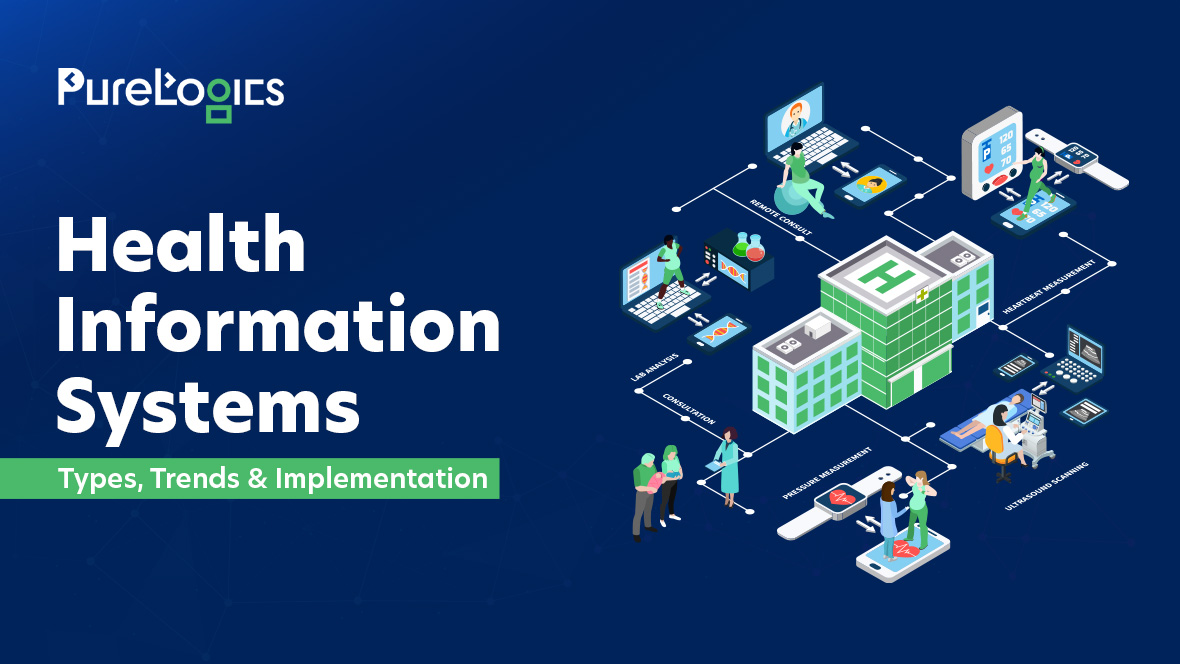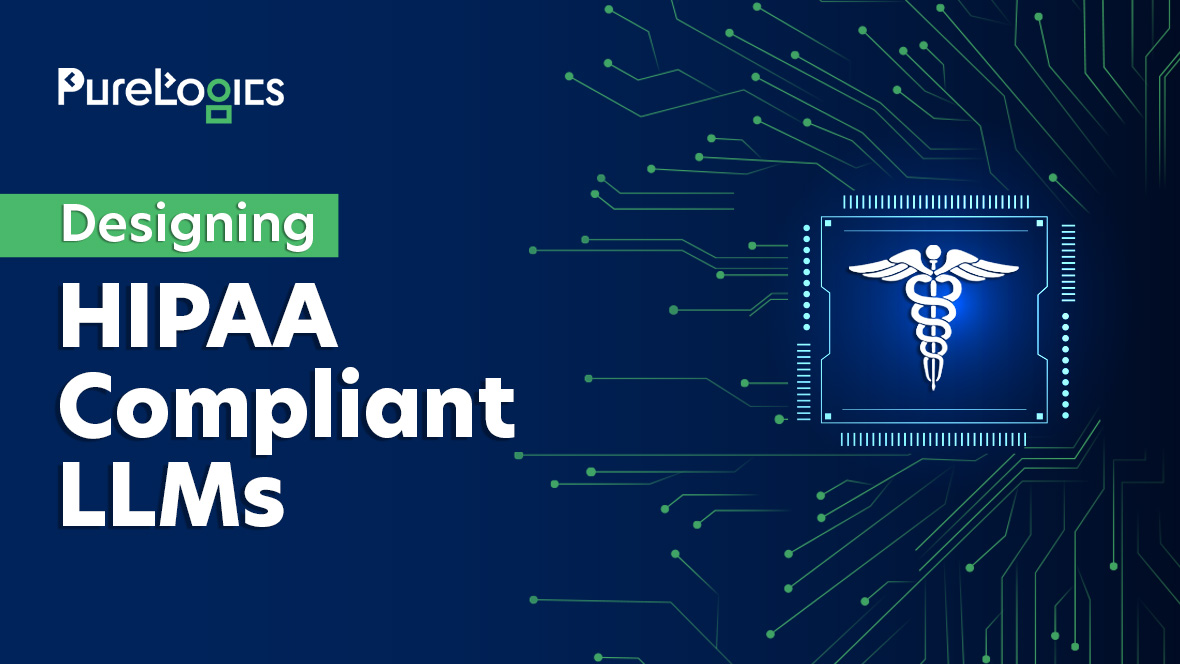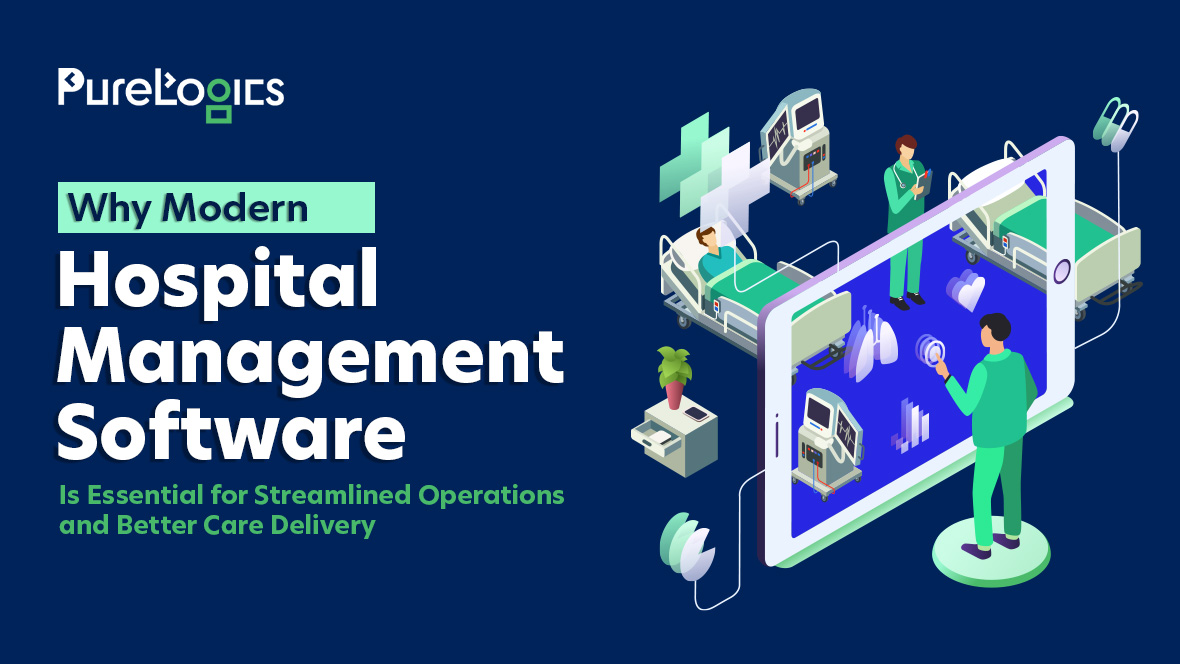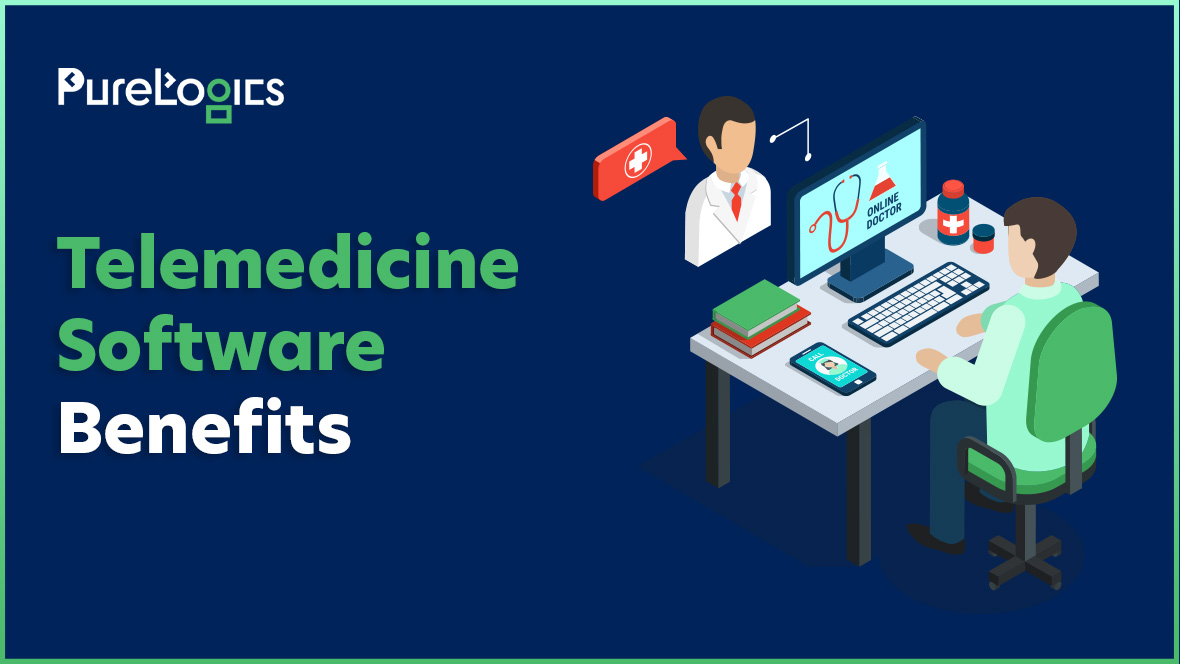Running a healthcare establishment without a health information system (HIS) can decrease efficiency, create chaotic workflows, and cause more errors. Furthermore, the HIS market is expected to exceed billions of dollars by 2030 because this robust software can seamlessly enhance patient outcomes, improve data management, and streamline operations.
Health Information System
A health information system can help medical professionals exchange and manage healthcare data by:
- Maintaining administrative tasks
- Combining patient information
- Enhancing communication within various departments
This is useful for offering timely and accurate information to healthcare professionals and streamlining operations.
Key Aspects of Health Information System
These systems are the cornerstone of modern healthcare. Here are the key aspects that make these powerful solutions:
Software and Hardware
The backbone of any health information system is its software and hardware infrastructure but few systems are also cloud-based, so it’s important to keep that in mind.
The software component has apps like practice management software, clinical decision support systems, and EHR. These tools are useful for healthcare providers to schedule appointments, make informed decisions, and manage patient care.
Hardware usually includes workstations, network devices, and services that ensure systems function smoothly.
User Interface
The UI is where healthcare professionals interact with the health information system. A quality-designed user interface allows doctors, administrators, and nurses to access and upgrade patient data efficiently and quickly.
A quality UI minimizes errors, lowers learning curves, and streamlines the healthcare delivery process. The UI must be adaptable and responsive to multiple devices, from mobile phones to desktops, ensuring that healthcare professionals can access the health information system anywhere.
Data Storage & Management
Data storage and management are essential aspects of health information systems. These tools store, collect, and manage large amounts of patient data, from treatment plans to medical histories.
Guaranteeing this data is compliant and protected with HIPPS laws and standards. This will protect patient privacy and improve the information’s reliability and accuracy.
Types of Health Information System
These systems come in different types, each building to address unique healthcare department needs. Understanding these various types can assist you in selecting the best tools to optimize your patient outcomes and operations.
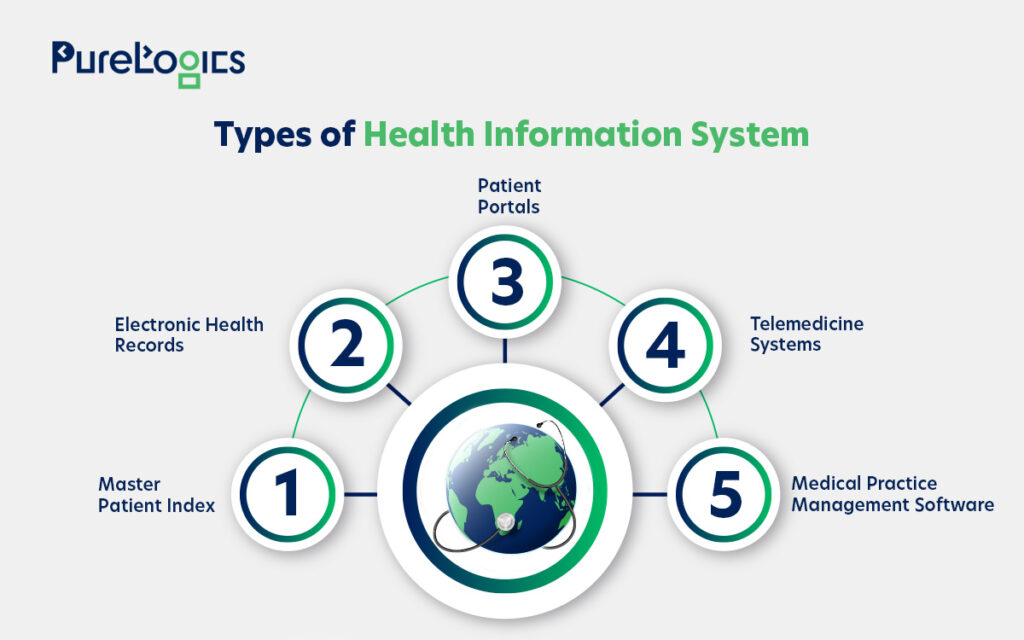
Master Patient Index
Have you experienced the irritation of duplicated medical data? With the Master Patient Index, you can manage unique identifiers for each patient within a healthcare company, ensuring accurate patient identification and minimizing duplicate records. MPI is essential for reliable and consistent access to patient information, supporting quality patient care coordination, and improving data integrity.
Electronic Health Records
These systems are digital versions of paper charts for patients. EHRs offer patient-centered and real-time records that make data available securely and instantly to authorized users. Additionally, EHR systems have various benefits, including better clarity and accuracy, the requirement for extensive training, and higher patient participation.
Patient Portals
Imagine accessing your health data from the ease of your home; guess what? It’s possible with patient portals. With these secure online tools, patients can schedule appointments, see test results, and seamlessly communicate with healthcare professionals. Patient portals enhance satisfaction and engagement by offering direct access to their health information.
Telemedicine Systems
This software utilizes digital technology to offer remote clinical solutions to patients. Telemedicine systems have features like remote monitoring, electronic prescriptions, and video consultation. Telemedicine is very advantageous for people in remote areas, providing them access to healthcare facilities without traveling. Additionally, it supports post-hospitalization updates and chronic disease management.
Medical Practice Management Software
This software can act as the backbone of medical practice and manage everything from appointment scheduling to handling patient billing and demographics. These systems can improve communication and lower paperwork by automating administrative tasks and ensuring everything is on track.
Optimize Your Workflow with HIS
From EHR to telemedicine, see how HIS transforms patient care.
Implementation of HIS
Integrating a health information system is essential to improving patient care and healthcare operations. However, the entire procedure can be complicated and needs careful execution and planning.
Let’s narrow down the primary stages of the health information system:
Requirement & Planning Analysis
This step involves finding the primary areas that need improvement, like billing, appointment scheduling, and patient record management. Engage with stakeholders to get their unique requirements and insights, as it will help in the planning processes and specify clear objectives for the health information system implementation.
System Selection
Selecting the right health information system is vital. You should identify features that match your needs, like a user-friendly interface, powerful data security measures, and interoperability. Assess various vendors by comparing their reading review offerings and assuming their track record in the healthcare sector. Choosing a system that meets your current needs and is scalable enough to cater to your future growth is crucial.
Custom Solution vs. Off-the-Shelf
When selecting HIS software, you have two options: custom software development and off-the-shelf solutions. You can quickly implement off-the-shelf solutions as they’re ready-made but might not fully meet your unique needs. Custom healthcare software solutions are personalized to your needs, offering greater integration capabilities and flexibility.
Implementation & Configuration
You must install and configure your health information system to align your healthcare department’s workflows. Ensure your IT infrastructure fulfills the system’s demands and the installation procedure is precisely planned to evade disruptions. Furthermore, it is important to integrate the hospital information system with the current systems to ensure smooth communication and data flow.
Training & Support
An effective HIS implementation relies on how well end users utilize the system. Offer comprehensive training to team members, including the system’s best practices and core functionalities. Providing continuous support is also highly important, as it resolves errors that may occur in the future and ensures that the implemented system remains up-to-date and efficient.
Recent Innovations in Health Information Systems
The dynamics of health information systems are quickly changing and innovations in the industry are also constantly emerging. HIS technologies have given remarkable advancements in recent years.
AI & ML: These technologies improve hospital operations and enhance predictive analytics. Virtual health assistants and AI-powered chatbots are optimizing patient engagement and lowering the burden on healthcare professionals.
Blockchain: This technology is doing wonders by offering a transparent and secure method for maintaining patient records and guaranteeing data integrity.
Iot devices: The integration of IoT devices enables real-time data collection and monitoring, improving healthcare solutions‘ efficiency and accuracy.
Future Trends
The future of health information systems is promising. Integrating artificial intelligence and machine learning will become more advanced, providing deeper insights into the patient data and allowing customized treatment plans.
Conclusion
In conclusion, Health Information Systems (HIS) have become an indispensable part of modern healthcare, offering transformative benefits like improved patient outcomes, streamlined operations, and enhanced data management. From telemedicine to AI-powered solutions, the landscape of HIS continues to evolve, promising a future of greater efficiency and patient-centered care. Implementing these systems requires careful planning, thoughtful system selection, and robust training to unlock their full potential.
At PureLogics, we specialize in delivering high-quality healthcare solutions tailored to meet your needs. Our expertise ensures that you benefit from innovative HIS technologies, setting a new standard for efficiency and excellence in healthcare.


 [tta_listen_btn]
[tta_listen_btn]
 January 10 2025
January 10 2025

